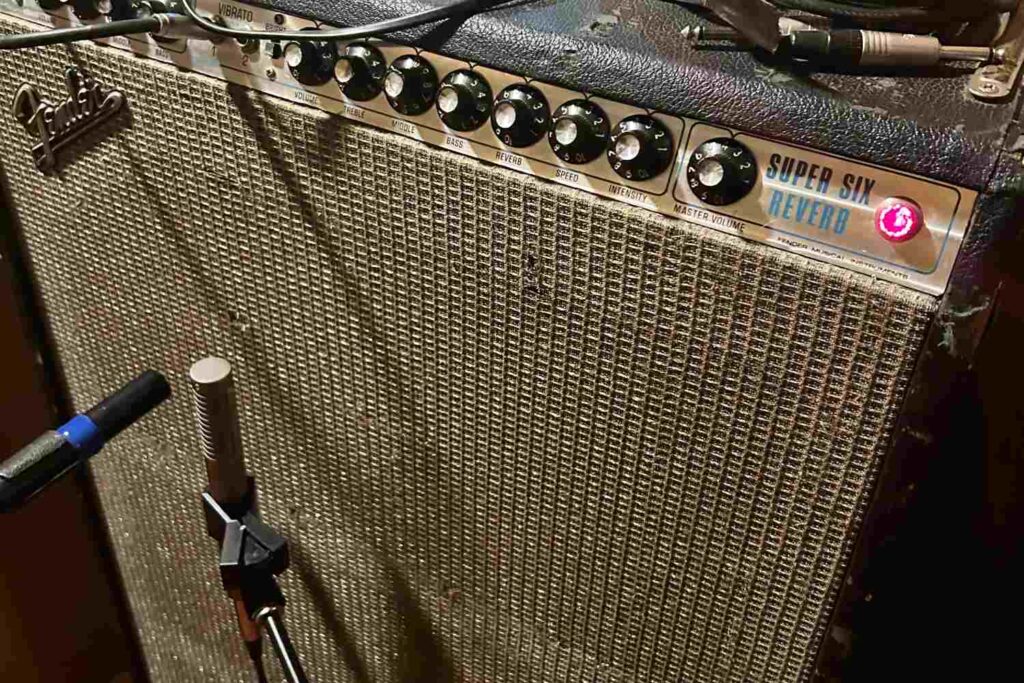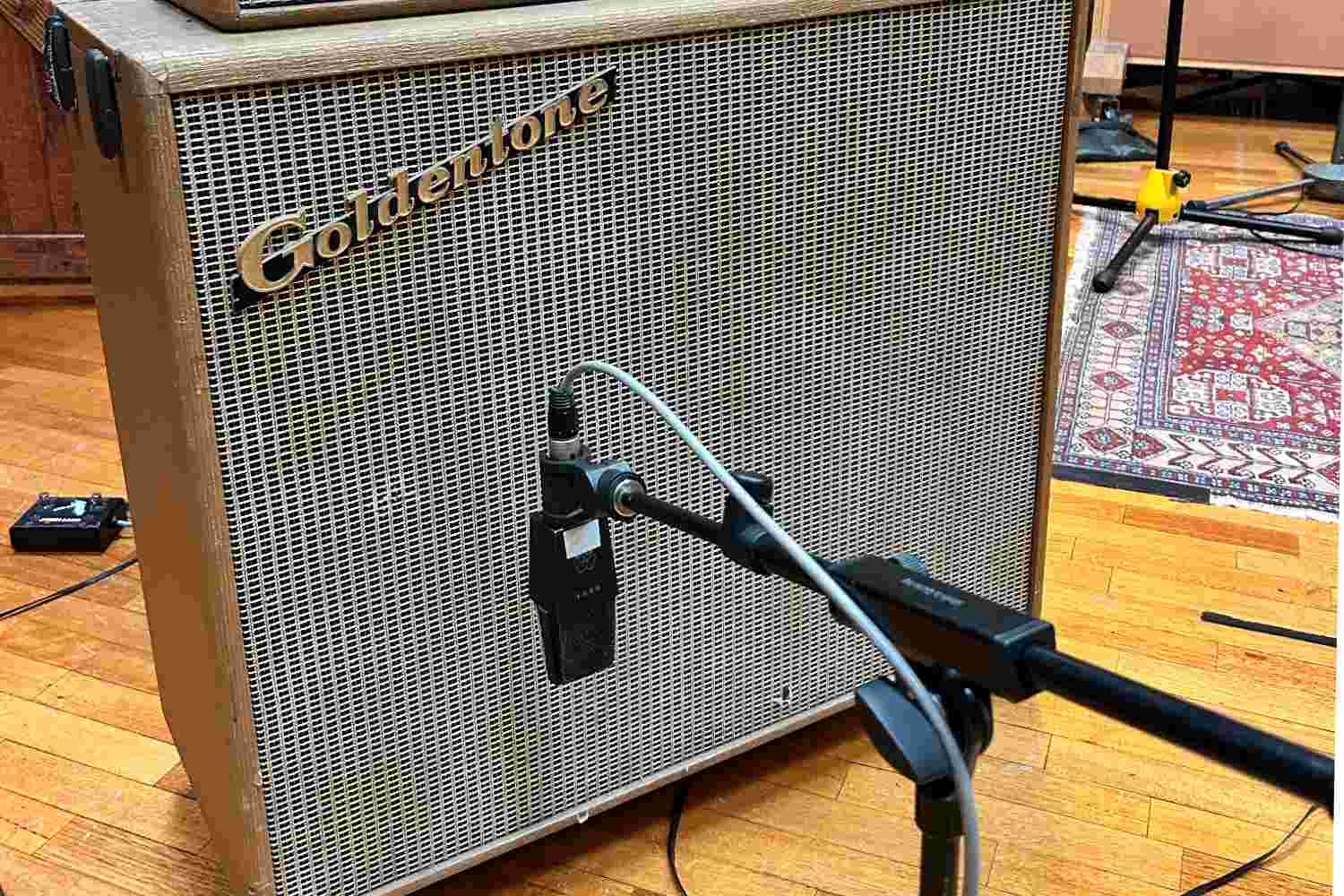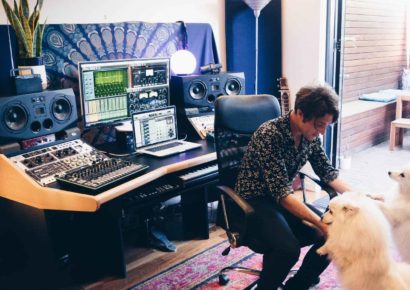I believe a great guitar sound doesn’t come from extreme experimentation on the engineering side.
Let’s talk about electric guitar recording, and by that I mean the “art” of putting microphones on guitar amplifier loudspeaker enclosures. I use quotations to emphasise my feeling in that I would lean towards it being more of a science and/or mechanical process rather than art. We leave all the genius up to the person that owns a house deposit worth of pedals on their pedalboard.
Recording a guitar amplifier
I believe a great guitar sound doesn’t come from extreme experimentation on the engineering side. It is generally a result of playing with a well set up guitar and the right gauge strings, into a decent amplifier with a reliable speaker box. All of these factors are considerably more important than whether a mic preamplifier is electronically coupled or transformer coupled (though I do have my preferences).
Read up on all the latest features and columns here.
I’ve seen and been a part of some really interesting and fantastic guitar sounds that have come from strange mic positions, at times on generally unfavourable amplifiers and cabinets. This kind of experimentation is indeed fun and worthwhile doing, but I wouldn’t start on that foot. I try to begin with the notion that the guitar sounds excellent and I should just try not to ruin it. Or on the other hand, the guitar doesn’t sound great and I shouldn’t try to fix that by mic position, it should be fixed at the guitar or amplifier stage.
Mr. Speaker
If we look at a loudspeaker from front on, the centre is going to be moving in and out of the magnetic gap most accurately. This area of sound will tend to be the most tightly controlled representation of the signal. Further out from the dust cap, as sound is dispersed from the edges of the speaker there are other artifacts occurring from rippling or crumpling. These effects usually create harmonic distortion and tend to be less accurate.
All this to say, the centre of the speaker will always be brighter, fuller and more accurate. The outer cone of the speaker will always be darker and slower in transient response.
If I’m using one microphone I will first assess the sound of the amplifier and hazard a guess at the mic that will be able to best compliment or sometimes even combat that sound. For example if what you are trying to record is a Tele through a vintage Vox AC15 then maybe a ribbon microphone would help tame the shrillness. A Les Paul through a fuzz pedal and into an old V4 may need the clarity and articulation of a limited bandwidth moving coil microphone that can handle extreme SPL (sound pressure level). You don’t need to memorise frequency response charts of microphones, but you will eventually build up a rolodex of mics in your head that are suited to certain applications.
Pole Position
When you play guitar do you ever rest your ear against the cabinet? It would be ill-advised for you to do so. I don’t have a way to prove this but I have a working theory that extreme close miking is a hangover from live sound methodology. I would put angling mics on cabinets under this same omission.
I feel that when the mic is too close to the speaker there are exaggerated sonics such as internal cabinet reflections creating weird low mid range comb filtering artefacts. Without getting into all that, guitar sounds exciting when the notes bloom and collect in the air, at times even requiring a room microphone to capture the ambient space it is interacting with. I find myself settling somewhere between 200mm and 400mm for this reason.
Secondly, further distance is ideal for the mechanics of the transducer. The polar pattern of a microphone is created by sound engaging the front of the capsule and some of the sound leaking into the back or side. The interference of those two is what synthesizes a pattern of rejection. If the mic is physically large, then the sound gets to the front of the microphone incredibly fast and slower to the rear. Using this rationale, if you wanted to exaggerate the proximity effect to the largest degree, it would be ideal to use a figure 8 microphone (like a ribbon) with a large magnetic armature. Not always suitable but sometimes the best bet.
Finding the exact spot to put a microphone is a case of waving my head around the front of the cabinet with blocked ears whilst somebody plays. There will be a pocket of air in which the low end sounds the tightest and most controlled. There will also be a spot where the upper mids are more even and less pokey. This is only evident (and safe) with fingers jammed onto your ears, this also somewhat imitates the response of dynamic microphones.
Using one microphone to capture a summation of speakers (a 2×12 or 4×12) will also require a similar technique, although you will need to find the phantom centre where the speakers meet. In this application I would typically use a beyerdynamic m160 or an AKG C414 B-ULS. If you turn the amplifier down significantly and get the guitarist to pluck an open string clean, you can move your head around until your ear hits the phantom centre where there is no phase discrepancy and you can hear an evenly timed sound of every speaker. I will then move a stand so it is touching my ear and mark on the stand with tape to be able to position the microphone accurately.
Dark and Bright
My most common method is to blend 2 microphones together, one dark microphone and one bright. These would be multed together and summed to one track, or sometimes kept as separate tracks when recording into a computer. This gives the option of balancing presence or thickness even right up to the mix stage. To me this is preferable to reaching for an equalizer as it upholds the organic sound of the guitar amplifier.
I’m not opposed to using EQs or effects in the mix process when it comes to guitars. Ideally, I would much prefer to put pedals to use and hit the input stage of the amp. This not only builds excitement in the performance but you will find that effects often don’t sound as satisfying off “tape”.

Sometimes you may be able to get a guitar sound to the final mastering stage without any EQ, effects or compression, which isn’t the goal but it’s a nice feeling and makes you feel like you aren’t faking it. Here’s a quick list of some of my favourite choices for varying budgets!
Favourite microphones:
- Beyerdynamic M160
- Royer 77
- Electro Voice RE20
- Josephson C42
- Josephson E22
- AT Pro37r
- Neumann U67
- SE voodoo / VR1
- Lomo 1909
- Coles 4038
- Beyerdynamic M201
- Heil pr30
- Heil pr40
- Sennheiser Md421
- Rode Reporter
- Beyerdynamic M88
- Royer 121
- Altec 175
Preamplifiers:
- JLM NV500
- JLM TG2
- GKL MA-PEQ
- Telefunken V-76
- Sytek MPX 4A
- UA 6176
- Thermionic Culture Rooster
- Retro OP-6
- Neve 1064
- Neve 1073
- Chandler Red – 47
- Ampex 351
- LaChapelle 583 MK2
- Avalon 737
Keep reading about more home-studio focused techniques here.

